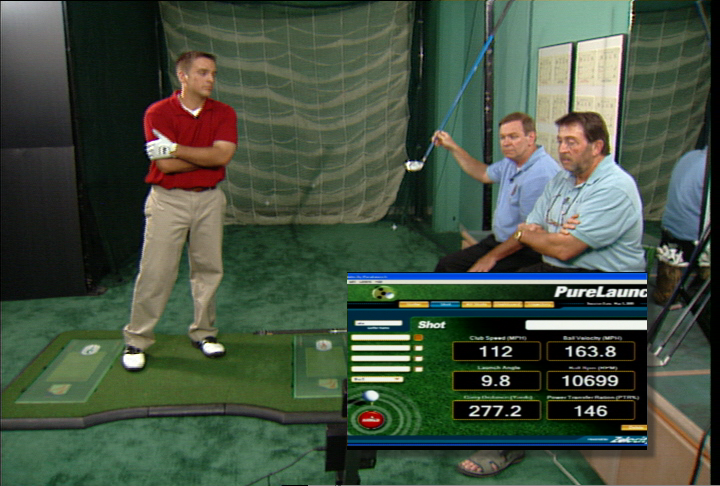John Ford has been making custom golf clubs for almost 40 years. He’s built sets for Jack Nicklaus, Arnold Palmer, Sam Snead and many other greats. He knows from experience precisely how the performance characteristics of a golf club can affect the motion of the golf swing.
“I could take a tour pro like Adam Scott, who has a picture perfect golf swing, and I could make him a set of irons that would cause the ball to go to the right every time.” Ford said. “Of course, with his talent he’d figure it out pretty quickly and correct the problem by creating a swing that brings the ball back to the left.”
 But Ford’s not working with tour pros these days. He’s working with clients in The Villages, Florida who are struggling just to break 90 or 100. And from the data he’s gathered, it’s obvious that most of them are trying to compensate for some kind of shortcoming in their equipment.
But Ford’s not working with tour pros these days. He’s working with clients in The Villages, Florida who are struggling just to break 90 or 100. And from the data he’s gathered, it’s obvious that most of them are trying to compensate for some kind of shortcoming in their equipment.
“Ninety percent of all golfers who walk in here have equipment problems that are forcing them to make compensations in their golf swings,” Ford said. “And it’s really hard to improve until they understand that, and accept it. I like to use this analogy… Is it the Indian, or the arrow? Golfers seem to believe that it’s always the Indian that causes the problem, but we have irrefutable data that shows that sometimes, it really is the arrow.”
Scott Sikorski, a PGA Professional in Naples, not only accepts that equipment effects motion, he applies John Ford’s thinking into his own teaching.
“I think it’s a crime to give a lesson without first checking the student’s equipment,” Sikorski said. “My job is to pinpoint the cause of our student’s problems, and I can’t do that unless I test his equipment. If I can’t eliminate that variable, I’m just flying in the dark.”
Everyone who has ever picked up a golf club has learned the same way… by watching the flight of the ball. When a player sees the ball flying off course, he naturally tries to correct that.
Most people do that by changing their golf swing. And sometimes it works — for a little while. But Ford insists it always leads to other problems, and often becomes a merry-go round of experimentation and frustration.
Even the most unskilled, uninformed golfer can learn to compensate for bad ball flight, to some degree. But all that compensation is not only hard work, it’s often completely unnecessary.
“People are working so hard to improve, but they’re being set-up to fail because of the clubs they’re playing with,” Ford said. “It’s much easier to change the specs of your equipment than it is to change your golf swing. Why not fix the easy things first?”
So the bottom line is, it could easily be the club, AND NOT YOUR SWING, that’s causing you problems on the tee, the fairway, even the greens. So get your clubs tested. Once you accept that fact you can start down the right path and eliminate much of the experimentation that’s holding you back.
